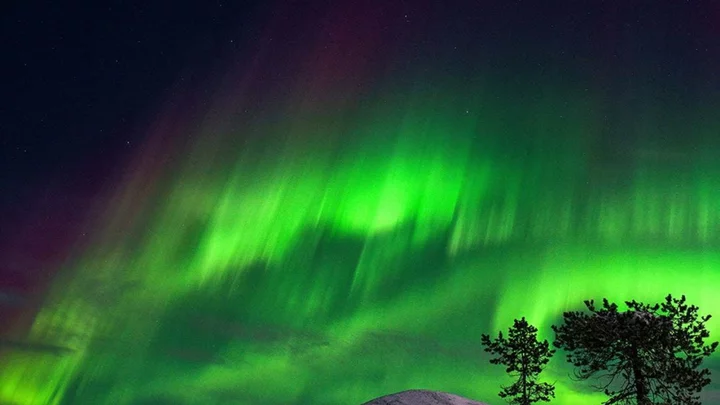The Northern Lights will be visible from the UK thanks to a large “cannibal” solar storm that is hitting the Earth.
The aurora borealis (aka Northern Lights) are produced by when radiation from the Sun is deflected by the magnetic field of the Earth.
Typically, the Northern Lights can be seen further north of the UK in the Nordic countries such as Iceland and Norway, as well as in northern parts of Canada.
This is because when solar radiation hits the Earth, it is drawn to the Earth’s magnetic field, which runs north to south, and is directed towards to north and south poles.
But, every now and then when there is a strong enough solar storm, they can also be seen further south in the UK because of the increased levels of solar radiation.
From today (20 July), Brits stand a chance of catching a glimpse of the famous Nothern Lights once it turns dark.
Sign up to our free Indy100 weekly newsletter
Those in Scotland have the greatest chance of spotting the spectacle, however, they could also be viewed further south, but cloud cover and fewer hours of darkness mean it’s difficult to pinpoint cities with any great accuracy, says the Met Office.
For the best chance to see the Northern Lights, experts recommend getting out of major cities. This is because, for the aurora borealis to be most visible, there must be minimal levels of light pollution which is not the case in built-up areas.
The severity of the “cannibal” solar storm may be so strong that it disrupts radio signals and creates different weather patterns.
Sean Elvidge, associate professor of space environment at the University of Birmingham, explained: “These storms manifest as major disturbances in Earth's magnetic field, potentially causing various space weather effects.
“On one hand, they can result in radio blackouts, disrupting communication systems on our planet. On the other hand, these storms can produce awe-inspiring displays of natural beauty known as auroras.”
Have your say in our news democracy. Click the upvote icon at the top of the page to help raise this article through the indy100 rankings.

